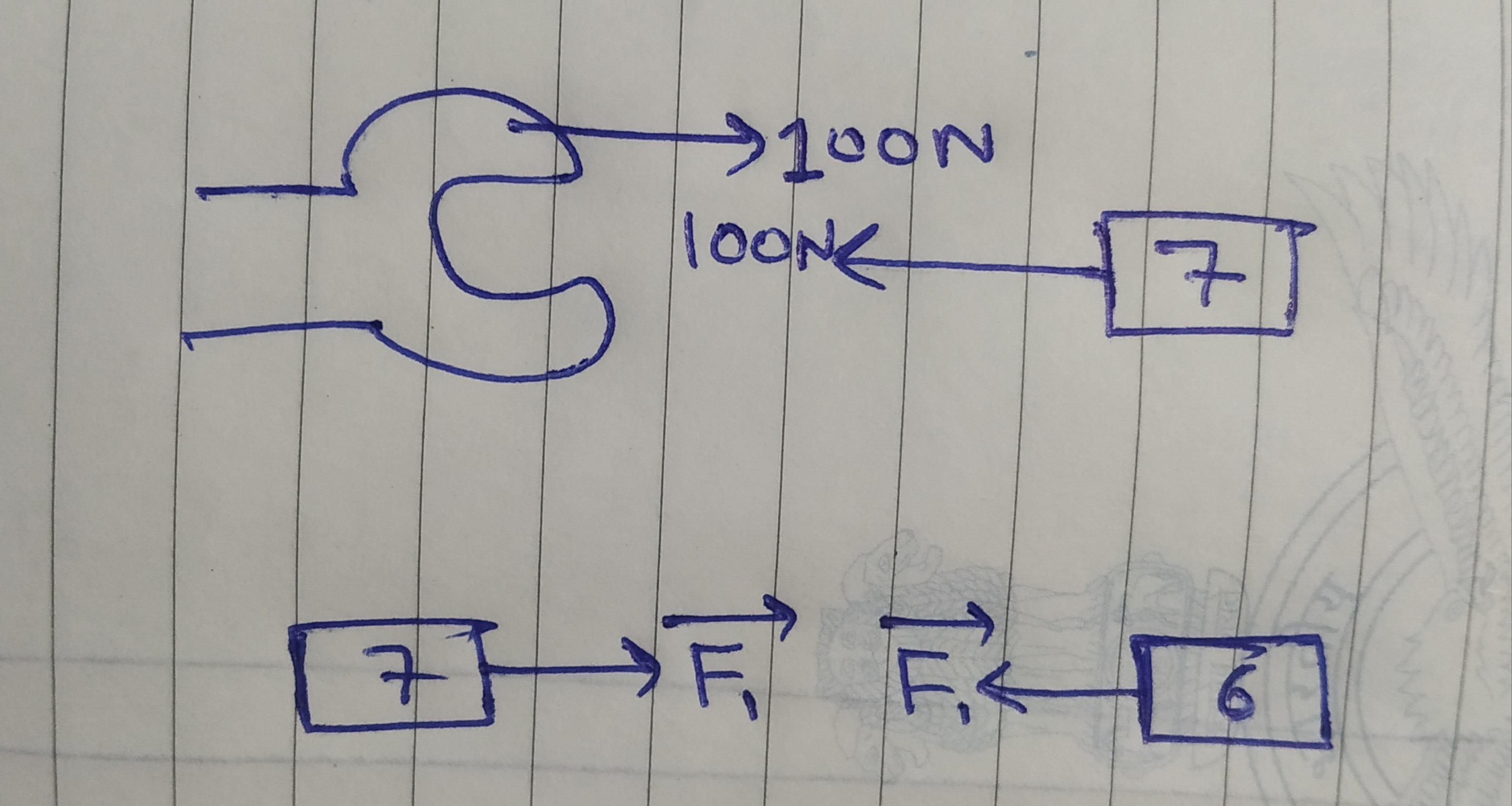This is a long post, but only because I have explained the scenario very very clearly,90 percent of this post is explaining you a simple situation,my doubt is only 5-6 lines at the very end of this post,so please bear the patience and please help me
Imagine a scenario where 2 people are pulling with equal forces of 100N on a rope of some mass M

Now,for better understanding of tension,let us view the rope as a connection of molecules through which the rope is made of,something like this
1.the boxes represent molecules
2.The blue lines represent intermolecular forces
3.The boxes are numbered for a purpose you'll soon find out)
Now,the man pulls on molecule 1 with 100N,
By Newton's 3rd law,the molecule 1 SHOULD pull the man with a force of 100N as well(am I right? Does the molecule 1 actually produce a reaction force of 100N which pulls the man?) 
Now,since molecule 1 is being pulled towards man,it will have some motion towards the right,as a result repulsive and attractive forces between molecule 1 and 2 would reduce,but there would be a net attractive force between molecule 1 and 2 due to Coulomb's force
The same thing follows at the other end, man pulls with 100 N on molecule 7,molecule 7 SHOULD produce reaction pulling force of 100N, Molecule 7 moves towards man,Coulomb's force develops between molecule 7 and 6
Now,2 moves to right due to force F,so again repulsive and attractive forces between molecule 2 and 3 reduce but there is net attractive electrostatic attractive forces between molecule 2 and 3(Coulomb's force I think)
Same thing in molecule 6 and 5
And it goes on and on
In short, free body diagrams of all the objects are as follows
Now,we know,net force on rope is 0,so by Newton's 2nd law(F=ma), We get the following values
Action pull force by man on molecule 1=100N(given in the situation)=Reaction pull force by man on molecule 1=100N(newtons 3rd law)=F=F2=F4=F5=F3=F1=action pull force by man on molecule 7(given)=reaction pull force on man by molecule 7(newton 3rd law)
Question
Which force,in this holy world,is tension out of all these forces? Many people say it's the reaction force due to pulling force,so is it the reaction force applied by molecule 1 and 7 on the men?but some people say it's the force by which one part of rope pull the other part,so is it force F,F1,F2,F3,F4,F5???some people say tension pulls the man,while others say tension is developed in the rope,WHICH ONE IS IT??????I know by 2nd law all these forces came equal in magnitude so it won't make any difference in values whichever I consider BUT I precisely wish to know which one of these is actually the holy "TENSION" Force??





$between mathematical variables for better readibility. For example$F$reads $F$. $\endgroup$